We return now, to the world of strange and fantastic weaponry of China. This time we are looking at the Tiger Hooks (or double hooks, hook swords, tiger head hooks etc.). These weapons are some of the most wild looking and impressive weapons to wield. The weapons themselves have a mysterious history, appearing only as early as the 1800’s. Yet, they are some of the most recognizable bladed weapons in the Chinese arsenal.
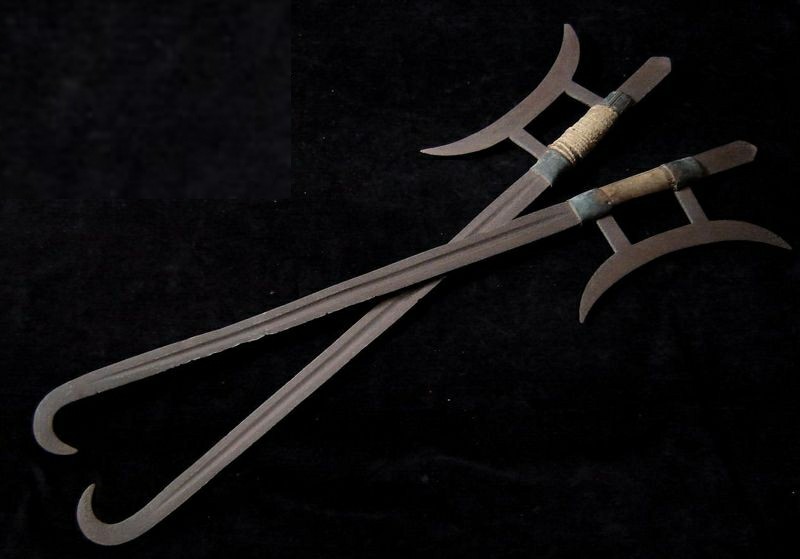
History, or lack thereof
Like their cousins the Deer Horn Knives, The Tiger Hooks appear very suddenly on the martial arts scene. The oldest examples I am aware of date to the end of the Qing Dynasty and the 1880’s. There could be older examples that I am not aware of, but most of my research has lead only back that far. Prior to this, there is no record of these weapons. They do not appear in any military catalog, treatise, or training regimen recorded. There are no manuals of the weapon printed before the 20th century, to my knowledge, and even then they are still a very exotic choice, only being included in a handful of systems.
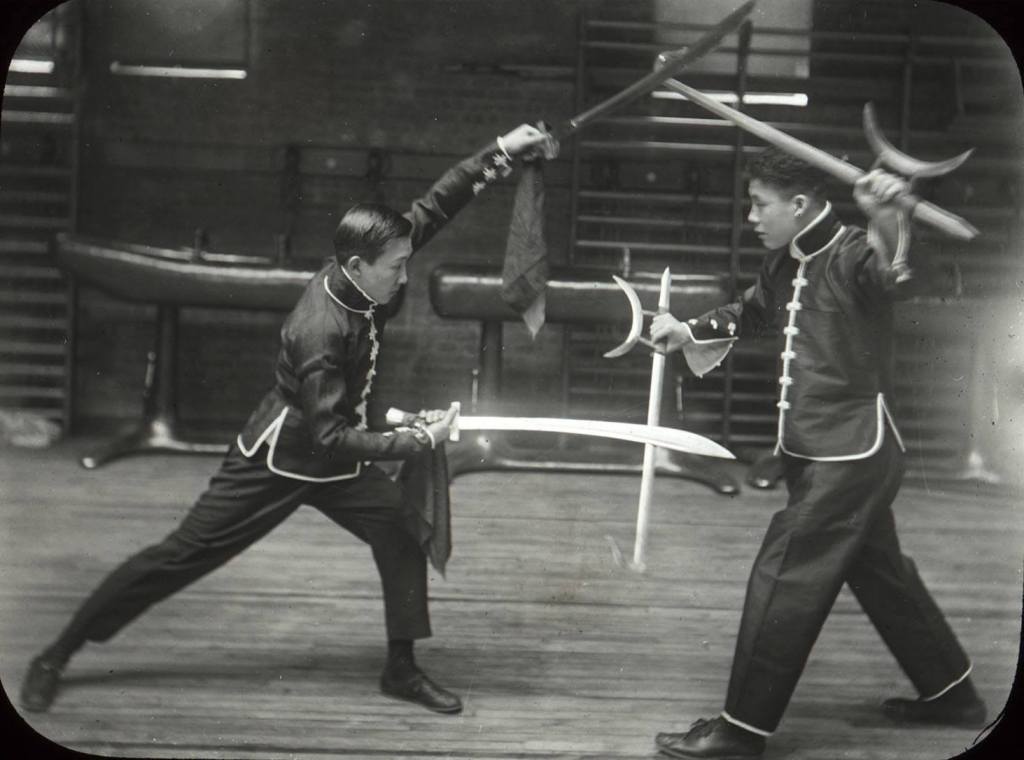
While there are no records or tangible evidence of the hooks proper in the historical record prior to the 19th century, the weapons do posses some features that do have historical precedent. Elements of design can be traced back fairly far back. Also the (presumed) ideas behind their use are shared by some older weapons that do have military and civilian use in history.
The Shape of Things
Tiger Hooks come in some very strange styles. There is considerable variation in some examples. But there is a core, common design that seems to be indicative of the weapon. Variations are all some manipulation of these features:
-A Long blade with a hook at the end.
-A crescent shaped hand guard/ knuckle bow
-A Pommel dagger or spear head that protrudes from the bottom the handle.
From there, considerable variation can occur. But most stay within these parameters.

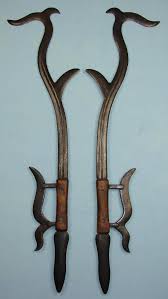
The real question is; why this particular shape? Examples of this weapon from history date back only as far as the Later Qing Dynasty. Of those a good number of them are ‘performance weapons’. These are weapons designed for use in performances of buskers and theatrical troops. These weapons are not hardened as a steel weapon should be. But, there are examples of hardened hooks that have sharp edges, presumably for combat purposes.
The entire weapon is most often made of steel. Which is a good amount of material, making them (most likely) more expensive to produce than a normal Jian or Dao. The hook at the end makes it difficult to sheath or store while carrying a weapon grade, sharpened example. Performance specimens could be a fair amount cheaper. For more info on the specifications Chinese arms, please visit Mandarin Mansion. Peter Dekker is one of the worlds foremost experts on antique Chinese and south Asian arms and armor. His site has lots of great information.

Ancestry
As mentioned, the Hooks are not found in any military text nor are they described in any battlefield or military context. It is unlikely that they were used in the military at any point. Their design does not lend its self to fighting in formations and the transport of the weapons is difficult and dangerous (if sharp).
This does not mean that there is no connection to military and other such traditions. There are a few other weapons that bear a resemblance to the hooks and some that serve about the same purpose, or at least follow the same mindset when wielding them. Since the weapon has so little written about it, there are largely conjecture, but interesting as far as reconstructing how the hooks may have been used, if at all.
The Crescent
First, the crescent shaped guard. This feature is common, if not required, for the Tiger Hooks. The guard together with the pommel spike, form a rather familiar shape. This shape tends to show up in many weapons that came the long military history of China. If one takes the handle and guard of the hook and turn them upside down, you can see a very familiar weapon.
The Chinese Halberd 戟
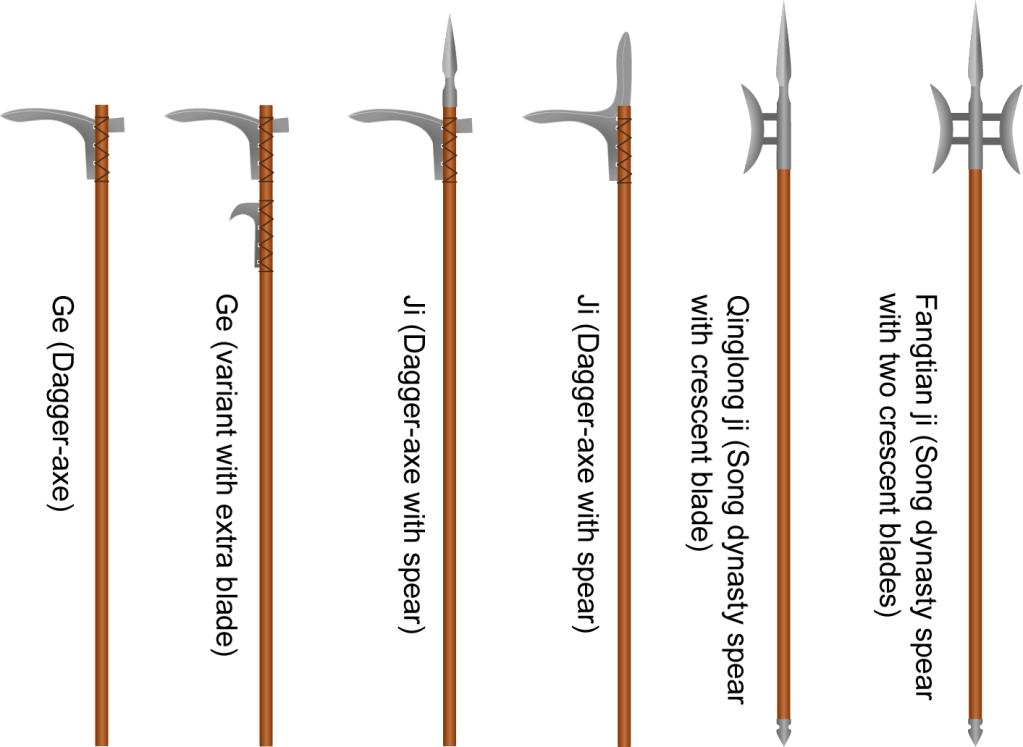
(Image from Wikimedia Commons.)
The Ji (戟) or halberd, is an ancient military pole arm. Often called Green Dragon Halberd (Qing Long Ji 青龍戟) or Square Sky Halberd (Feng Tian Ji 方天戟), It is said to be descended from the Ge (戈) or “dagger axe”. Both weapons are essentially a small hybrid weapon attached to a long staff or pole. The Ji his known for having at least one crescent shaped blade and a spear head above that. Just like the dagger axe, the Ji was able to stab, chop and hack but also hook and pull, a tactic well used against shields and some forms of calvary. Double headed versions exist as well as double bladed “stacked” forms. The shape of the Ji has since migrated to being a sort of signature on some Chinese weapons. By the Republic Period of the 1920’ and 30’s, this shape could be seen in a large number of weapon designs.
The Ji was usually shorter than the Ge, often being able to be carried easier and found use in single combat or melee as well. Some examples were very short, used in pairs, and were double headed. There are modern forms which display the weapon. But the distinctive crescent shape is repurposed as a guard in several short weapons that can be likened to the Tiger Hooks.
But why the transition to the crescent being the guard? In its previous incarnation, the crescent was used as a cutting and hooking implement. How did it transition to a guard? While there is no definitive answer on that process, there are some possibilities that are useful to think about.
We tend to see a lot of variation in the Ji. A long pole, a shorter pole, two very short sticks for handles, etc. It stands to reason that when these weapons broke, some may have picked them up and adjusted their movements and use of the weapon. If the shaft of your Ji broke close to the head, that piece is substantial enough to be a weapon by it’s self. Over time, The likelihood that a person might look at the shaft and want to use that as a weapon to keep some distance does not seem a big leap. The hand protection that is offered by the crescent is an advantage as well. But, the absence of the crescent at the end would rob it of one of its best techniques, hooking. Which brings us to…
The Hook
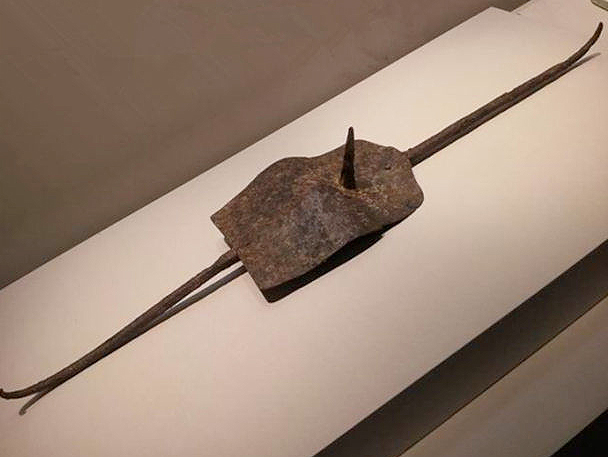
Both the Ji and the Ge were used in battle for hooking and chopping etc. The hooking part would be useful for prying open shield walls in formations, taking down riders from their mounts, and trapping the long weapons like spears that were ubiquitous on the battlefield. But there is also a precedent for using a hooking weapons in single combat.
The Gou Rang 鉤鑲 was a sort of buckler popular in the Han dynasty. It has two hooks that protrude from the top and bottom of the oblong or rectangular shield portion. The device was used in the Han Dynasty by fencers and soldiers mainly for use in single combat like duels. The Gou Rang would be paired with a sword, saber, or even a short handled Ji. While this was primarily a shield, it did have a spike on the front surface that could be used to stab and to parry more effectively. The Gou Rang is really in the family of Chinese shields. It’s inclusion as comparative to the Tiger Hooks and to the Deer Horn knives is about the use of hooking and trapping while guarding the hand. From a use perspective, they seem to be connected in that strategy.
The Tiger Hooks in Use
Again, we must reiterate, there is no record of the actual use of these weapons in any context before the 1800’s. If they did exist prior to that period, we have no examples. But even considering their recent incorporation, the use of the hooks still defies being pinned down.
There are many suppositions about what the hooks would have been good for. Most “School Lore” posits that these and other hook weapons are to be used against the sword. Others say that they are to be used against long arms and pole weapons. But the fact remains, neither is supported by any historical evidence.
Performance

One thing that the hooks have been involved in even to this day, is the performance and demonstration aspect. Solo forms and routines done with this weapon are very pleasing to watch. And we do have records of street performers using the hook in their presentations. Weapon vs. weapon sets are, also, a performative style of martial art, often seen to increase the reputation of these iconic blades.
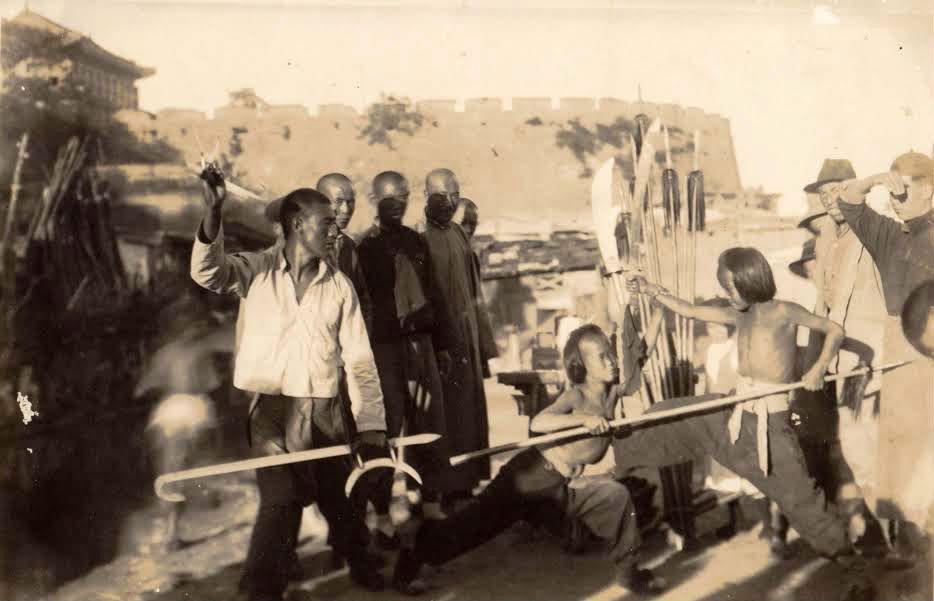
Today the forms or tao lu with the Tiger hooks are some of the most spectacular and entertaining of all weapons. And the sets today reflect an evolution to flash and spectator enjoyment. This means that we can’t look to most of the forms for many coherent usage clues. Sets using the hooks are more about learning to manipulate the weapons without getting in your own way. Traditional (older) sets have less of the flash and are often times very repetitive and drill oriented. Even when they are not, much of the movements tend to focus on moving the hooks around rather than obvious attack and defense techniques.
Use as a Weapon
Were Tiger Hooks used as a weapon at all? Perhaps as a civilian weapon, or personal defense weapon? There are a few situations where the Hooks could have their origins. Again, we are left to conjecture as the historical record is devoid of mentions. Some state it was used against specific weapons. Could they be used against swords or blades? Maybe long weapons?
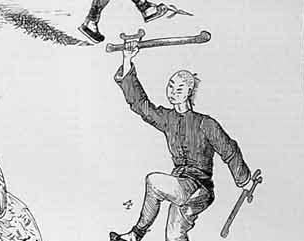
All quite possibly. However, the physical attributes of the weapon make it seem a less than convenient weapon to store and transport. The odd shape and hook make it difficult to make sheaths or scabbards for the blades. So many surfaces could be sharpened, and i’m not sure to what extent. And as mentioned, the entire weapon is made of steel. That is a significant amount of metal that would have been costly for most normal people. Especially if it is the good quality steel that you might use for weapons. If it was a weapon, it was probably only used by a specific class of person.
And that brings us to the next possibility: that they were used as weapons, but not against other weapons, but against the unarmed. Gangs and street crime have always been a part of human society. Criminal organizations and thugs are well known for using intimidating weapons to exert their influence. While there are no actual records of folks being killed by tiger hooks that I am aware of, the possibility that the criminal element used them to be fearsome etc. Against an unarmed person, the Hooks could make terrifying injuries. The look its self is intimidating enough, but the amount of edges creates real danger for the target. But, still it is just conjecture as there do not seem to be any reports of such.
Means of Attack
Wether or not they were use in the past, can they be used as functional weapon now? With new gear and even plastic tiger hooks for sparring, what are the objective possibilities for this weapon? The Tiger Hooks are endowed with many fearsome weapons but how well can one use them against a resisting opponent? What matter of advantage or disadvantage would one incur if they chose to use the tiger hooks?
I have had a few chances to experiment with and against the Tiger Hooks. We have not been able to meet since COVID so I will have to relate these observations as best I can. I hope to have more sparring footage soon as the weather improves.
But, we can have a look at the form of the hooks and extrapolate some predictions on what will happen. Due to the number of weapons on the Hook its self, there are a large number of possible attacks. Of these type of attacks, the short range weapons are much higher percentage than strikes at a distance. The dagger on the pommel and the points of the guard are very difficult to defend against once they enter a certain range. The hook portion of the weapon can be used for hooking weapons and shields, but is often too small to really hook and capture a limb from the enemy unless it is around the wrist or ankle. That being said, if they were sharp, the hooks could open up enormous gashes due to their shape. if a major blood vessel were to be present, it would certainly be fatal.
Sharpness
There are many surfaces that can be sharpened on the Hooks. Arguments ensue over which parts were sharp or not, most people assuming that every surface was sharp that looks like it should be. I have not seen any historical sharpened examples so I have no first hand knowledge of what was sharpened or how common it was. But according to those that have handled these specimens, the edges were all sharpened if any were at all. That includes the inside of the hook and the entire crescent guard (except for where the hand is).

Also, people imagine only one type of sharpness. There are various levels of sharpness one can look for in an edge. Geometry, hone, and thickness all play a part. For the hooks, not all surfaces need to be razor sharp. Considering the amount of parries one would make with such a weapon against another weapon, one could see why some areas, like the guard, would not need to have a razor’s edge on it. A chisel or axe edge would suffice. Also, like the Deer Horn knives, a blow to the face with the knuckle bow would be devastating even without an edge.
Stabbing

There are several points on the hooks that are good for stabbing attacks. The points to the guard, the spearhead pommel, and the end of the hook. The dagger pommel is the best of these weapons. It is long and shaped in a way that can create a large wound or penetrate protective clothing. The points of the crescent are a little different. There is not much penetration due to the curvature of the blade and the rest of the weapon. Certain targets seem a better fit for using these offensively. The neck, face and head are prime for the shorter points. Using the hook to stab is a dubious idea. If it was well sharpened, it might be able to cut with a stab, but even then, it is lots of surface area making it an inefficient stabbing tool.
Hitting, Chopping, and Slicing
If we look at ways to hit, chop or slice, we can imagine many scenarios. The hooks are intimidatingly covered in edges. From the guard to the ends, it appears that every one of these could be dangerous. Taking on the conceit that these are all sharpened and intended to be used as primary cutting surfaces, the hooks offer a few options for these techniques. The hilt based form of the weapon has many intuitive actions because of that.

Of course, one may use the hooks to hit just as with a sword. The hand guard helps protect the welder, making more daring and dangerous maneuvers little more viable. Hitting with the long blade as you would a sword is an intuitive strategy. The shape of the hook at the end seems to be shaped for this type of Impact. Contacting with the opponent instead of the weapon could (presumably) cause a fairly large wound. The inside the hook being sharp would create a very nasty type of cut if one were able to hook the wrist or another small joint.
Slicing with the length of the blade is also a very intuitive action. This of course requires a closer distance, which we will explore when we take a look at its performance in free play with various weapons. The edges of the crescent can also be used in close range. The neck, arm pits, and inner thigh are prime targets for this part of the hook. The points can stab as we mentioned, but the inside of the crescent could be used as slicing tool going back and forth. While the outsides of the guard might have been sharpened, it is difficult to see a good way of using those by themselves. The daggers on the pommel are far more useful as a stabbing implement.
Parries

The simplest form of defense is a simple block. The hand guard is obviously a good defensive tool. Conventional parries as done with a single handed sword would also be an intuitive choice. As one experiments with the hooks, the urge to try to catch the incoming strikes is great. The hand protection provided at the guard and the hooking motions from the end are easy to visualize and use, even with a superficial knowledge the weapon. Trapping with the guard also seems to be a high percentage technique. Strikes that slide down the blade after the parry can easily get caught in the guard apparatus. Catching strikes with the dagger end also presents as a good technique.
Conclusion
This is the thought experiment portion of things. Just looking at the form and shape of the weapon lets us predict certain things. The fact of the matter is, since the Hooks have so many possibilities as far as their use, they are probably fairly easy to pick up and use to a certain extent no matter how much experience. If one has experience with other weapons, that can be invaluable. The difficultly seems to be in the many ways that the weapon can be tangled up and become trapped its self or the possibility of inuring ones self while wielding them. From the on set, while they seem fantastic in their form, they may present some interesting ideas when put to the test.
Next we will look at the actual capabilities of the Hooks as a weapon. Both from a mechanical stand point and a sparring one. I hope to be able to get a pair of sparring hooks and at least one sharp hook to test. Until then, the weapon gives us a lot to think about if not much to research in the way of historical facts. But, the imagination is an important part of the historical recreation of things. More and more material is being released about these and other weapons. So who knows what we will find next.
Tune in next time for a little the choppy choppy and a look at the actual use of the hooks against various weapons.
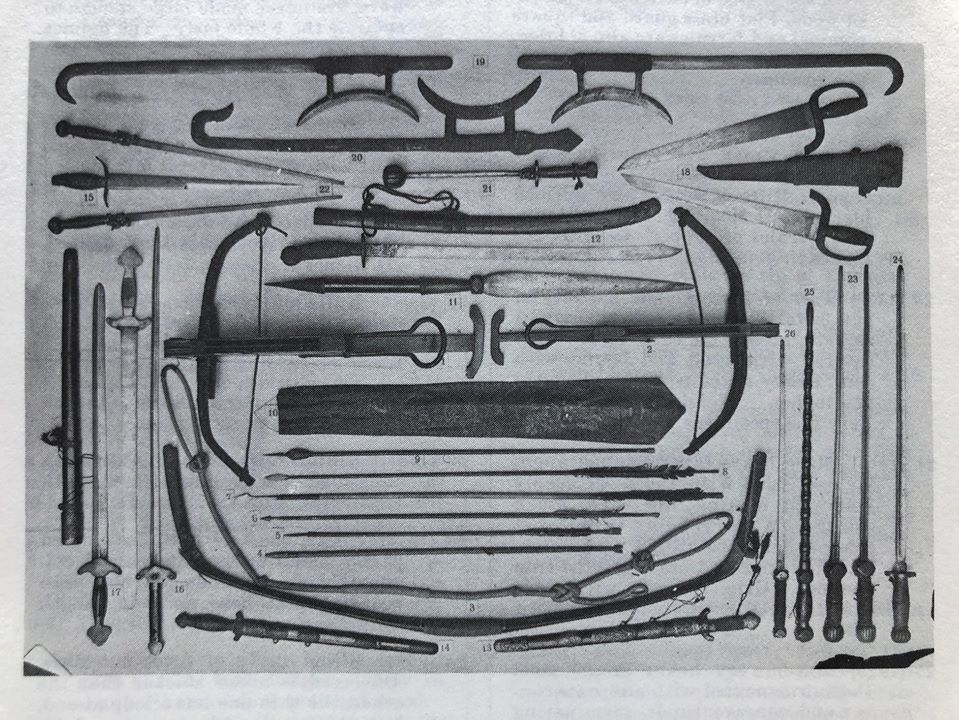





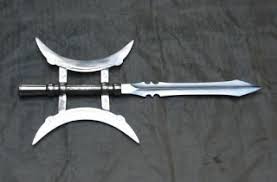
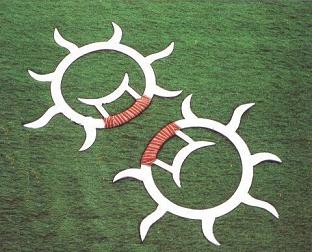
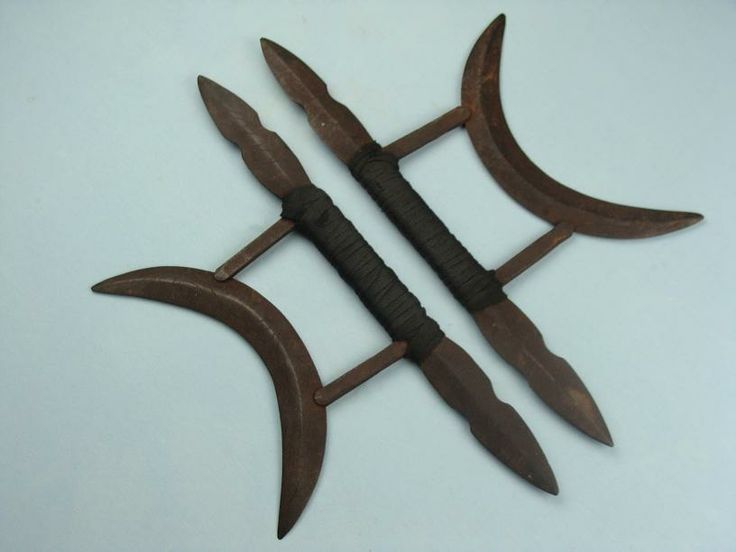
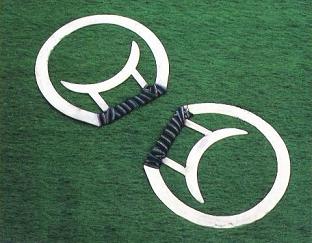
Hi, I hope that whomever is reading this is having a good day. Getting to business, I am a Kung Fu practitioner (I practice Eagle Claw and Northern Shaolin styles with my teacher Shi Yan Shao). In my time of searching for a weapon to specialize in and master, I found Shuang Guo (Hook Swords). This inspired me to do a lot of research on them for the last year or so. With that research I recorded my data and made a slideshow of it with sources I can share with you via email that may add some information to the section you have on Shuang Guo. The slide show consists of history, historical culture, pop culture, martial art use, and what to do to make your own. My goal is to validate my information and share it as much as I can so that other people have the ability to learn about hook swords without the need of doing the research like I or the person who wrote your section on Shuang Guo did. Email or reply to me if you are interested in seeing the slide. For whoever is reading this I hope you are doing well and stay in good health.
LikeLike
Please share away. I would be interested in what sources you were able to find as well.
LikeLike
I may be a bit stupid or not, but I can’t find an email for you, so can you please send me an email (zerasterthallwilliams@gmail.com) so I can reply and attach the slideshow. Also I’m excited that you want to see it. I have to adjust a few things so I may end up sending it later today. Apologies for the wait.
LikeLike
Here ya go! terraprimelightsaberacademy@gmail.com
LikeLike